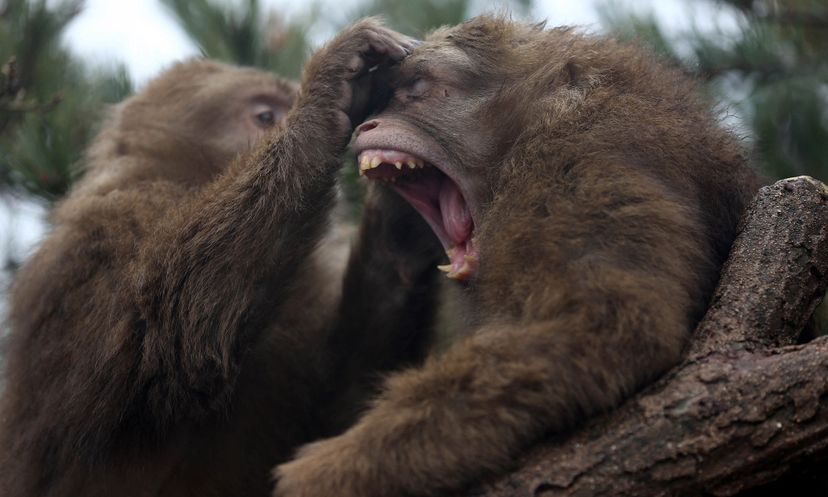
About This Quiz
Monkeys, apes and humans make up the primate animal grouping. Here is where we find our closest genetic relatives that exhibit familiar behaviors, including cultural practices, tool use and language acquisition. What separates primates from lower order animals is and what binds us together? Quit monkeying around and take the primate quiz to find out!Gorillas are the largest members of the primate family.
Great apes include chimpanzees, bonobos, gorillas, orangutans and humans.
The easiest way to distinguish monkeys from apes is to look for a tail. Most monkey species have tails, but no apes or hominids do.
Advertisement
The number of gorilla nests gives an approximation of the population size. Also, researchers can extract hair samples from these nests in order to examine individuals' health.
In an experiment, humans used 75 percent less energy walking upright than chimps used walking on all fours. Essentially, walking upright seems to be beneficial because it saves energy.
Chimpanzees are humans' closest genetic relatives, sharing around 96 percent of the same DNA sequencing.
Advertisement
Goodall's work with chimpanzees in Gombe, Tanzania, documented the apes using tools to complete or simplify tasks like cracking nuts open
Orangutans are the only great apes native to Asia.
Old World monkeys are found in the Eastern Hemisphere, while New World monkeys are found in the Western Hemisphere.
Advertisement
The Spanish parliament voted in June 2008 to support the tenets of the Great Ape Project. The nonprofit organization lobbies on behalf of great apes (chimps, gorillas, bonobos and orangutans) for their right to life, protection of individual liberty and prohibition of torture.